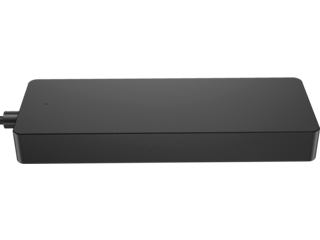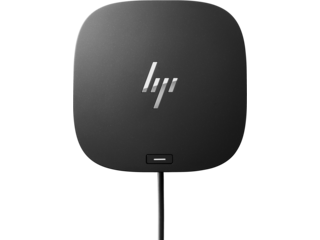Wondering how to transfer files from PC to PC? Whether you’ve just gotten a new computer or need to share data with a colleague, transferring files between PCs is a common task. In this guide, we’ll explore 6 easy methods to move your files, photos, and documents from one computer to another.
Why transfer files between computers?
There are many reasons you might need to transfer data from one PC to another:
- Setting up a new computer
- Transferring files from an old computer to a new one
- Backing up important files
- Sharing documents with coworkers
- Migrating to a new operating system
- Freeing up space on your old device
Whatever your reason, we’ll help you find the best way to transfer files from PC to PC.
6 methods to transfer files from PC to PC
1. Cloud storage or web data transfers
One of the easiest ways to transfer files from one computer to another is by using a cloud storage service, which offers convenience and security features like data encryption. Popular options include:
- Google Drive
- Microsoft OneDrive
- Dropbox
These services allow you to upload files to the cloud and then download them on your other computer. This method works well for transferring data from laptop to laptop or between PCs with different operating systems.
For large file transfers, you can use web-based services like:
- WeTransfer
- PlusTransfer
- FilePizza
These tools let you send big files without needing to create an account.
2. External hard drives or USB flash drives
Using an external device, such as an external hard drive or USB flash drive, is one of the most straightforward ways to transfer files from PC to PC. These devices allow you to transfer large volumes of data without relying on an internet connection. Here’s how:
- Connect the external drive to your old PC
- Copy the files you want to transfer
- Safely eject the drive
- Connect it to your new PC
- Copy the files to your new computer
This method is great for moving large amounts of data or if you don’t have a reliable internet connection.
3. Direct cable transfer
You can use a special USB transfer cable to directly connect two computers and transfer files. This method is often faster than using an external drive, especially if both PCs have USB 3.0 ports.
These specialty cables are designed specifically for PC-to-PC data transfer and typically come with software to guide you through the process. The software needs to be installed on both computers for the cable to function properly.
Key benefits of using a transfer cable include:
- Fast direct connection speeds
- No need for intermediate storage devices
- Simple plug-and-play operation
- Ability to transfer files, settings, and profiles
🔌 Essential for File Transfer - Multi-Port Connectivity
Transfer Made Easy!
HP USB-C Travel Hub G3
- Five ports: 2x USB-C, 2x USB-A, and HDMI
- Works with most devices and operating systems
- Compact design perfect for travel and transfers
5 ports | Universal compatibility | Portable design
4. PC transfer software
Specialized PC migration software can make the data transfer process much easier and more reliable, especially when setting up a new computer. These tools often allow you to:
- Choose which files and settings to transfer
- Move applications without reinstalling
- Transfer user accounts and preferences
- Automatically select important files and folders
While this method may require purchasing software, it can save you time and hassle, especially when moving to a new Windows PC. Many programs offer a user-friendly interface that walks you through the entire transfer process.
5. Network transfer (LAN or WiFi)
If both computers are on the same network, you can set up file sharing to transfer data. This works well for moving files between computers in the same home or office. Here’s how:
- Enable file sharing on both computers
- Connect both PCs to the same network
- Find the shared folders on the network
- Copy files between computers
This method is free and can be very fast, especially on wired networks.
6. SATA cable connection
For tech-savvy users, connecting the old hard drive directly to the new PC can be an effective way to transfer all your data. This involves:
- Removing the hard drive from the old PC
- Connecting it to the new PC using a SATA cable
- Copying the files you need
While this method requires some technical knowledge, it can be the fastest way to transfer very large amounts of data.
Tips for a smooth file transfer
No matter which method you choose, keep these tips in mind:
- Organize your files before transferring to save time and space
- Check for viruses on your old PC to avoid transferring malware
- Verify all files transferred correctly before deleting them from the old PC
- Back up important data before starting any transfer process
5 essential ports
USB-A and USB-C support
Compact travel design
Works with most devices
Universal compatibility
Multiple display support
100W power delivery
Enterprise features
Thunderbolt 4 speeds
180W power delivery
Premium connectivity
Enterprise security
After the transfer: Next steps
Once you’ve successfully transferred your files, don’t forget to:
- Wipe your old drive if you plan to sell or dispose of the old PC
- Set up a backup system on your new computer to protect your transferred files
- Update software and drivers on your new PC to ensure everything works correctly
Frequently Asked Questions About Transferring Files Between Computers
How do I transfer everything from my old computer to my new computer?
To transfer your entire system from one computer to another, use specialized migration software for the most comprehensive solution. This will help you transfer not just files, but also applications, settings, and user profiles between computers. Alternatively, use an external hard drive or cloud storage to transfer files between computers, then reinstall applications separately.
What is the fastest way to transfer files between computers?
The fastest method to transfer files from one computer to another depends on your hardware:
- Direct SATA connection: Fastest for large transfers (up to 600MB/s)
- USB 3.0/3.1 external hard drive: Very fast (up to 625MB/s)
- Ethernet cable direct connection: Fast and reliable (up to 125MB/s)
- WiFi transfer: Convenient but slower (varies by connection)
What should I do before transferring files to a new computer?
Before starting to transfer files between computers:
- Run a complete backup of your old computer
- Clean up unnecessary files and programs
- Update your operating system and drivers
- Make a list of installed programs
- Collect necessary license keys and passwords
- Organize files into clear folders
- Run antivirus scan on both computers
- Document your current settings
Choosing the Right Transfer Method for Your Needs
When deciding which file transfer method to use, consider these factors:
- Amount of data: For large transfers (over 100GB), direct connections like SATA or transfer cables work best
- Technical comfort level: Cloud storage and external drives are simplest for beginners
- Budget constraints: Network transfers and external drives you already own are the most economical
- Time available: Direct connections are fastest, while cloud transfers might take hours or days
- Frequency of transfers: For regular transfers, setting up network sharing might be most convenient
Conclusion
Whether you choose cloud storage, external hard drives, direct cables, or specialized software, transferring files from one computer to another doesn’t have to be complicated. By following this guide and implementing proper security measures, you can safely and efficiently transfer files between computers and get your new system set up properly. Remember to verify all transfers, maintain backups throughout the process, and properly secure both your old and new computers for optimal protection of your valuable data.
For more tips on optimizing your PC experience, explore HP’s range of laptops and desktop PCs designed to enhance your productivity.
About the Author
Michelle Wilson is a contributing writer for HP® Tech Takes. Michelle is a content creation specialist writing for a variety of industries, including tech trends and media news.
Popular HP PCs





















